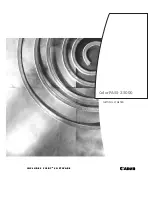
Chapter 5: Management with the CLU
159
Creating a Disk Array – Advanced
For more information on the choices below, see “Chapter 7: Technology
Background” on page 221. To create a disk array using the Advanced feature:
1.
From the Main Menu, highlight
Disk Array Management
and press Enter.
2.
Highlight
Create New Array
and press Enter.
3.
Highlight
Configuration Method
and press the spacebar to toggle to
Advanced
.
4.
Choose whether to enable Media Patrol and PDM.
5.
If you want to specify an alias to the disk array, highlight
Alias
and type a
name.
Maximum of 32 characters. Use letters, numbers, space between words and
underscore.
6.
Highlight
Save Settings
and Continue and press Enter.
7.
Highlight a physical drive you want to add to your array and press the
spacebar to select it.
Repeat this action until you have selected all the physical drives for your
array.
8.
Highlight
Save Settings and Continue
and press Enter.
9.
If you want to specify an alias to the logical drive, highlight
Alias
and type a
name.
Maximum of 32 characters. Use letters, numbers, space between words and
underscore.
10. Highlight
RAID Level
and press the spacebar to toggle though a list of
available RAID levels.
11. If you want to create multiple logical drives, highlight
Capacity
, press the
backspace key to remove the current value, then type a new smaller value.
12. Highlight
Number of Axles
and press the spacebar to select the number of
axles. Applies to RAID 50 and 60 only.
13. Highlight
Stripe
and press the spacebar to toggle through stripe sizes and
select 64 KB, 128 KB, 256 KB, 512 KB, or 1 MB.
14. Highlight
Sector
and press the spacebar to toggle through sector sizes and
select 512 B, 1 KB, 2 KB, or 4 KB.
15. Highlight
Write Policy
and press the spacebar to toggle write cache policy
between
WriteBack
and
WriteThru
(write though).
16. Highlight
Read Policy
and press the spacebar to toggle read cache policy
though
ReadCache
,
ReadAhead
, and
NoCache
.
17. Highlight
Preferred Controller ID
and press the spacebar to toggle among
1
,
2
, or
Automatic
. Applies to dual-controller capable Fibre Channel models
only.
Summary of Contents for E310f
Page 1: ...VTRAK E Class E310f and E310s PRODUCT MANUAL Version 1 1 ...
Page 14: ...VTrak E Class Product Manual xiv ...
Page 22: ...VTrak E Class Product Manual 8 ...
Page 58: ...VTrak E Class Product Manual 44 ...
Page 61: ...Chapter 4 Management with WebPAM PROe 47 Figure 1 The WebPAM PROe log in screen ...
Page 218: ...VTrak E Class Product Manual 204 ...
Page 234: ...VTrak E Class Product Manual 220 Figure 13 Replacing the VTrak controller ...
Page 304: ...VTrak E Class Product Manual 290 ...
Page 316: ...VTrak E Class Product Manual 302 ...
















































